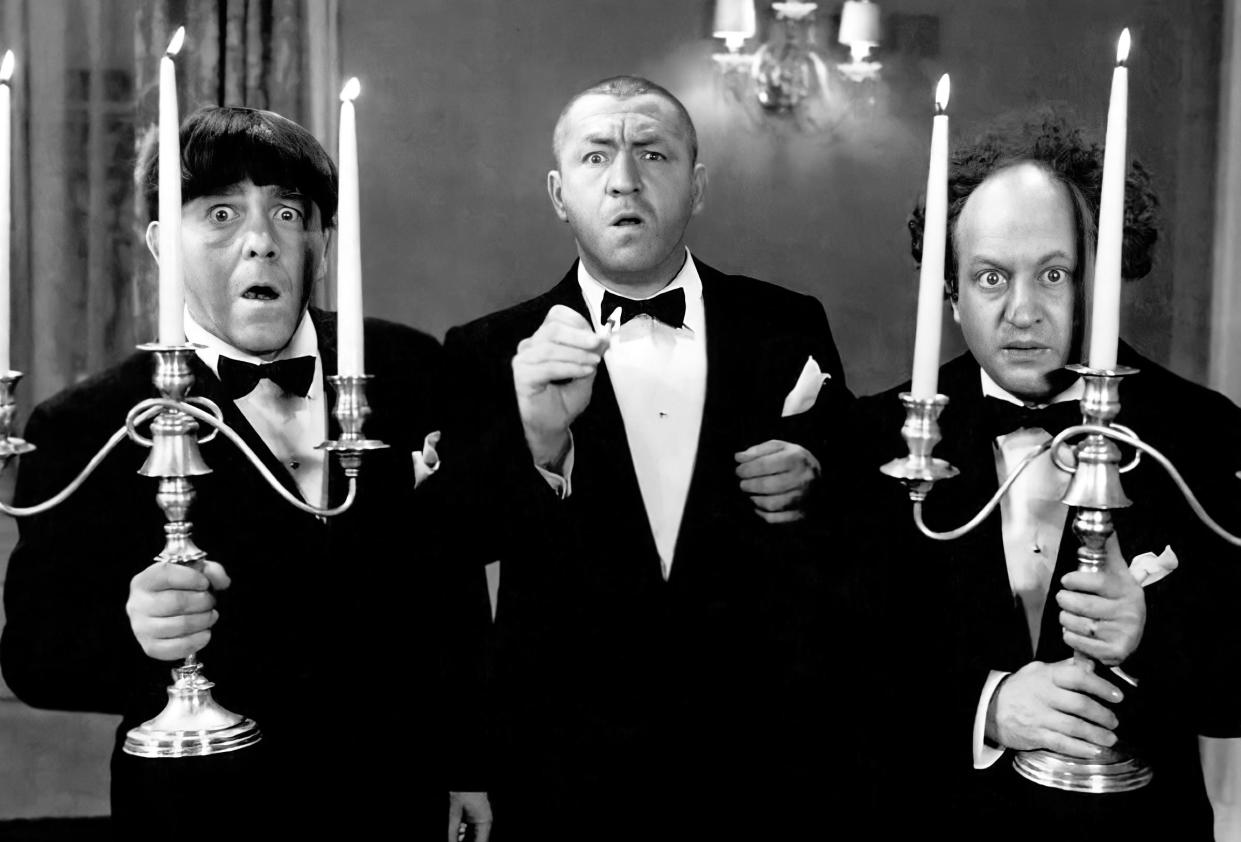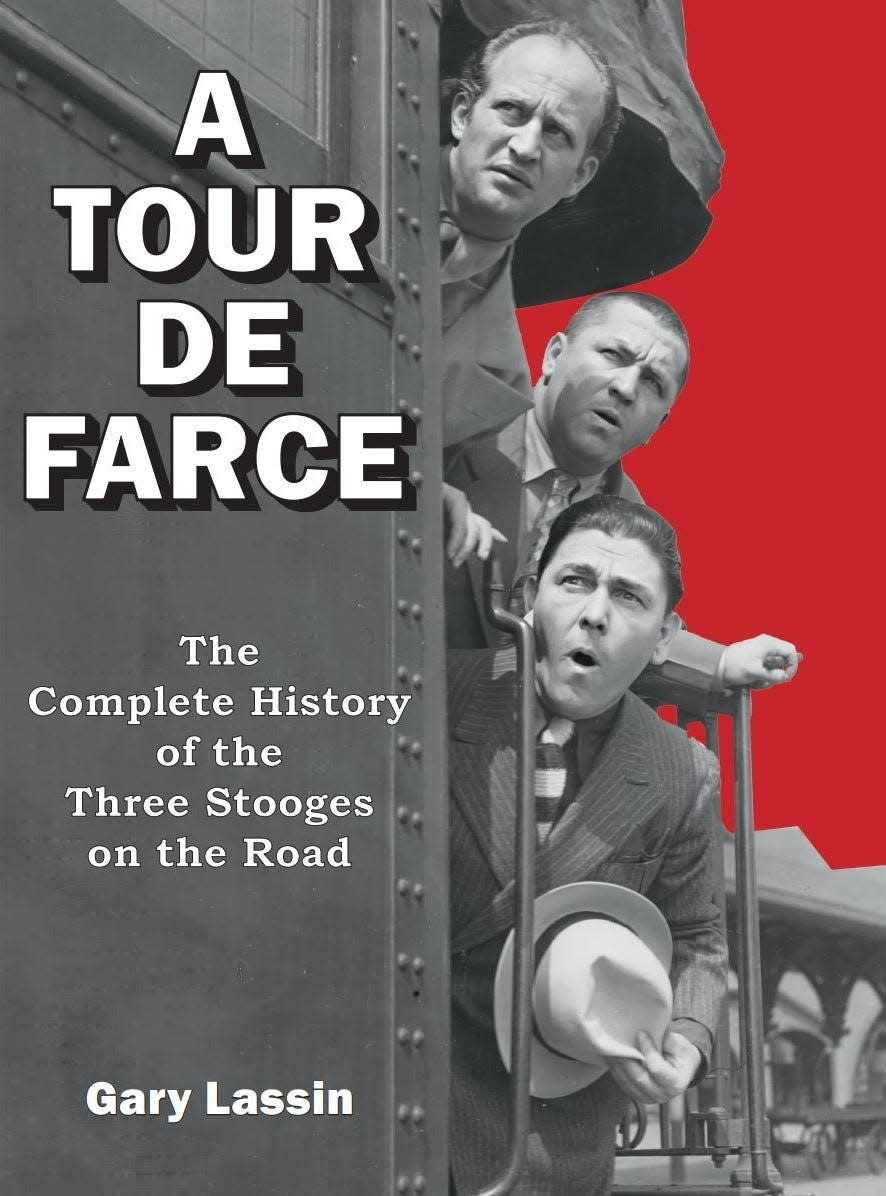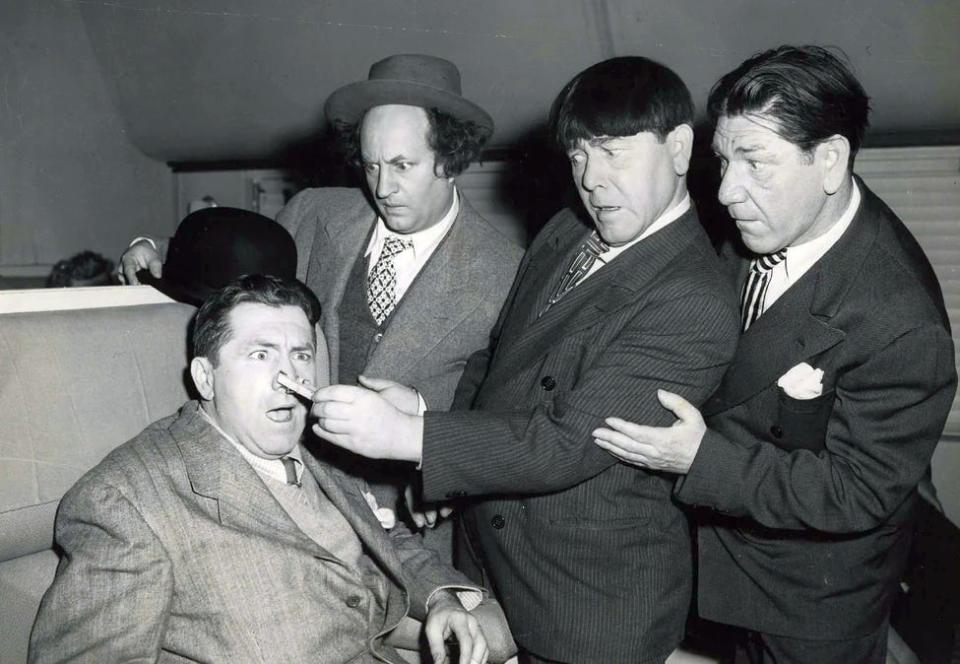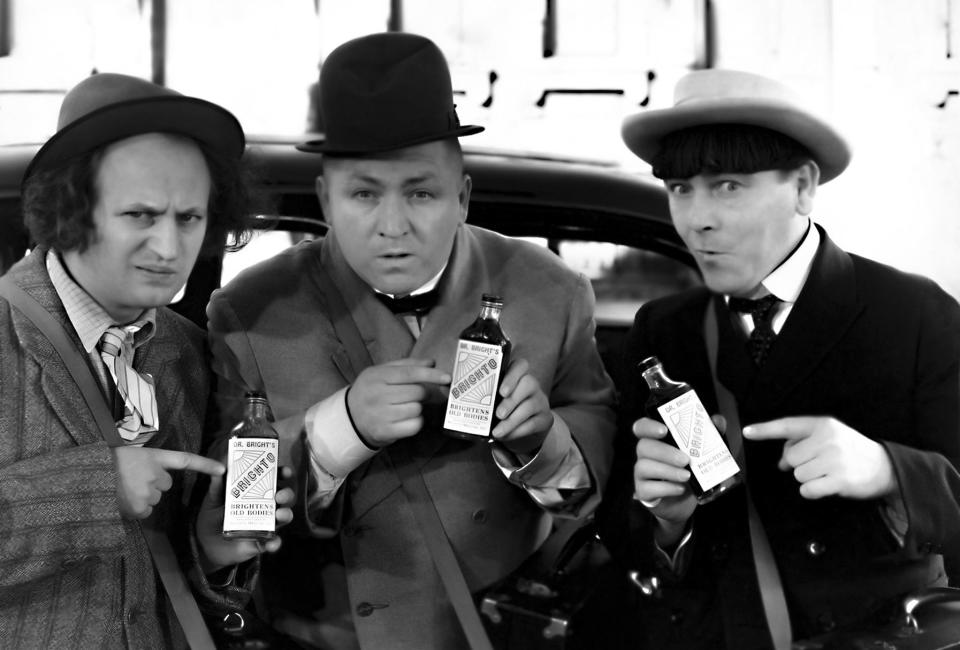New Three Stooges book retraces 50 years of touring

- Oops!Something went wrong.Please try again later.
- Oops!Something went wrong.Please try again later.
Despite extensive on-screen credits throughout their careers, The Three Stooges comedy team only spent about one month a year in front of the cameras. According to long-time Stooges fan Gary Lassin, the slapstick legends were on the road for up to 6 months a year, crisscrossing the country to perform largely vaudeville-like acts on stage.
Lassin says while there are some 50 books on the market covering every aspect of the Stooges’ career, none examine their extensive tour schedule that lasted from the 1920s to the 1960s. Those journeys are now recounted in exquisite detail in more than 750 pages of Lassin’s new book, “A Tour De Farce: The Complete History of the Three Stooges on the Road.”

As president of The Three Stooges fan club and owner/curator of a Three Stooges museum (The Stoogeum, see stoogeum.com) in Ambler, Penn., Lassin began assembling touring data over two decades ago after spotting a Rolling Stones fan wearing a T-shirt from the rockers’ old 1989 Steel Wheels Tour listing cities where they performed. A few weeks later, he saw a similar shirt for an unfamiliar band.
“I began to get a bit angry seeing the tour history of this unknown group printed on a shirt whereas the Three Stooges toured for 50 years, but no one had documented all the places they visited,” said Lassin from his suburban Philadelphia home. “So I just opened a blank Excel spreadsheet and began going through my Stooges memorabilia — playbills, programs, ticket stubs, photographs — to compile their travel history.”
He also began searching newspaper archives back in the day before online databases existed.
“Twice a year I’d drive to the Library of Congress in Washington to search their archives of major newspapers stored on microfilm,” he recalled. “I’d make copies for 25 cents a pop and come out with hundreds of pages of material I could add to my spreadsheet. Then in the early 2000s, newspapers began digitizing their archives which became a great resource to locate articles about Stooges’ appearances and accurately establish the dates.”
The book, currently available directly from the author (see tourdefarce.net), is also crammed with over 1,400 images mostly from Lassin’s private collection, hundreds being published for the first time.

Comprising the two Howard brothers Moe and Curly (Curly being later replaced by third brother Shemp, followed by Joe Besser and Joe DeRita) and Larry Fine, the Stooges are famous for the 190 short films produced by Columbia Pictures from 1934-1959. The trio of turmoil were masters of vintage Hollywood madcap mayhem, famous for brutalizing each other with any heavy object at hand, initiating food fights, and flattening their surroundings faster than a professional demolition team.But what would audiences attending their live stage shows have experienced?
“Nothing like their films, really,” said Lassin. “They didn’t have the benefit of movie special effects or other actors they could play off. So they usually did a 10-15 minute act consisting of two basic routines. There were skits where they'd play roles and act out a little and the other was called patter where they would go back and forth with silly jokes.”
An example of the latter, says Lassin, is when one would ask, “You goin’ fishing?” To which another would respond, “Yeah, you got worms?” followed by the punchline, “Yeah, but I'm going anyway.”
“It was really corny stuff that they recycled up into the 1960s,” laughed Lassin. “Their stage act was evolutionary rather than revolutionary and just slowly evolved, but really nothing like the fast-paced action in their films.”

The lack of sound effects that accompanied their screen antics no doubt also muted live performances.
“In the films, they had this sound effect guy, Joe Henrie, who just loved his job and came up with the craziest sound effects,” explained Lassin. “But for their live shows in the early days, someone from the orchestra would coordinate, say, a stomach punch with beating on a bass drum. But it was nothing like in the films. Later in the 60s, they would travel with a sound man who was positioned backstage and had five or six instruments, like a little ratchet he would twist when Moe pulled Larry's hair, or a drum or flugelhorn to match various actions on stage.”
Lassin estimates his book documents up to about 95% of live appearances by the Stooges.
“We'll never come up with all of them,” he said. “They also visited hospitals, military bases and other places that weren't advertised to the public.”
The Stooges also dealt with tragedy on the road. On the national level, they were touring when Pearl Harbor was attacked and President Kennedy was shot. But they were also confronted with long-distant personal heartbreaks.
“On one trip, Larry learned his son was killed in an automobile accident, then six years later he found out his wife had died back home,” Lassin explained.
Moe and Curly’s father, who was back in Los Angeles, also died while they were on the road. Being Jewish, tradition required 7 days of mourning that included prayers every night with a minimum of 10 adult men in attendance.
“But there was only Moe, Larry and Curly, so they called the local synagogue and were sent seven 14-year-old boys to pray with the Three Stooges backstage!” said Lassin. “I even found the newspaper article that listed the boys’ names. I tried to track them down but couldn’t.”
Lassin, who is related to Larry through marriage, has amassed over 100,000 pieces of Stooges memorabilia with thousands of items displayed in his museum. Like many adult Stooges fans today, he originally became enamored by the comedy troupe as a child.
“We only had three TV channels to watch when we came home from school,” he recalled. “So it was impossible for a kid not to see them and like them.”
Nick Thomas teaches at Auburn University at Montgomery, Ala, and has written features, columns, and interviews for numerous magazines and newspapers. See getnickt.org.
This article originally appeared on Mansfield News Journal: New book chronicles the Three Stooges' stage act

